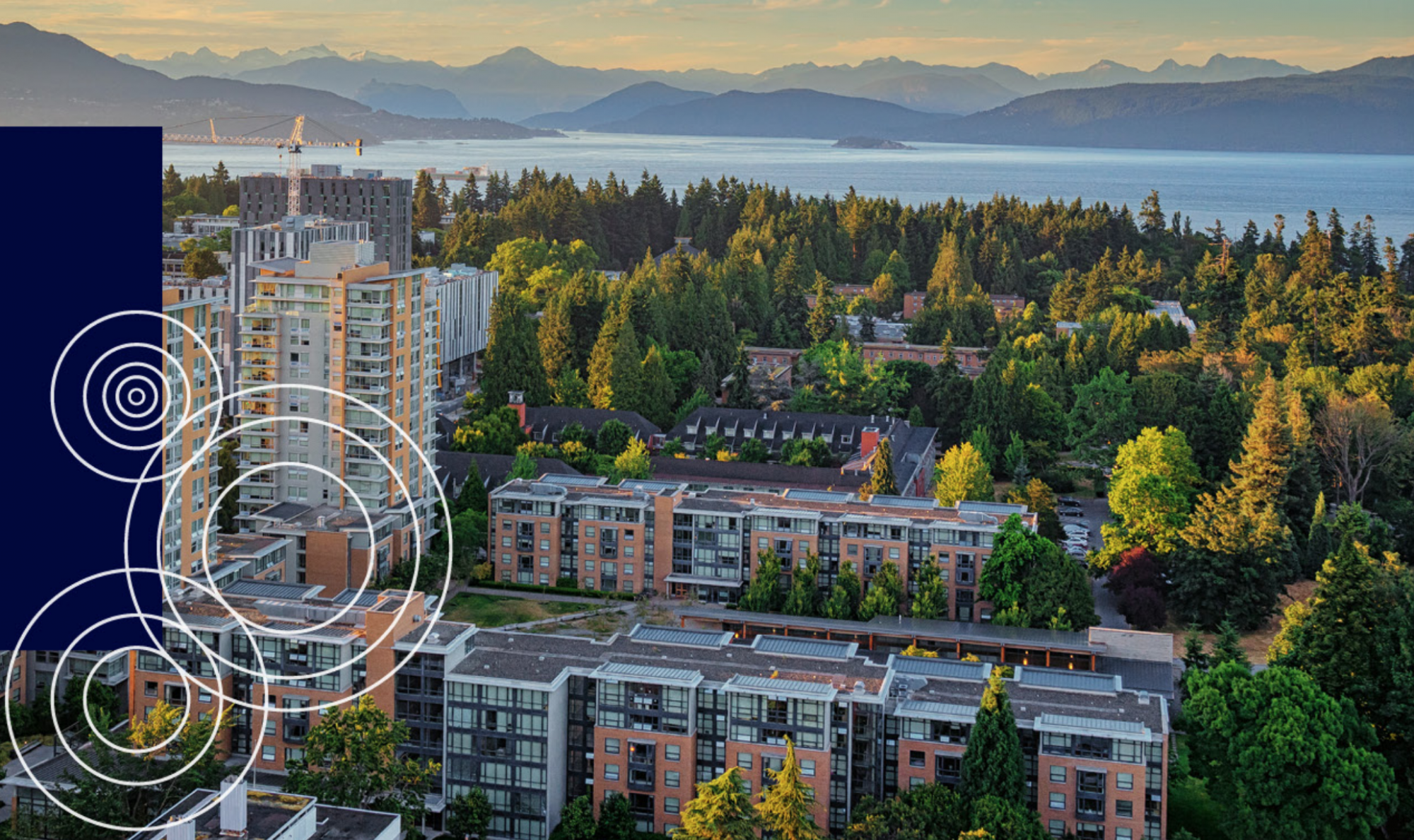The Netherlands is one of those countries who lives up to its name as being a ‘lowland’. 26% of the country is located below sea level, another 29% is susceptible for river floats, which makes the Netherlands highly susceptible for sea level rise.[1] However, for the past 65 years, the Netherlands has managed to prevent disastrous floats thanks to the construction of the Deltaworks.
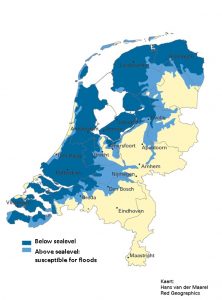
The year 1953 marks the turning point in the Dutch water management system. A heavy storm from the northwest in combination with a spring tide lead to the greatest natural disaster of the 20th century. The dikes in Zeeland, Zuid-Holland and Noord-Brabant were not strong or high enough to deal with the seawater rise of 4.55 m. A total of 1,836 people lost their lives, 4,300 homes were destroyed and 187,000 farm animals did not make it. The total damage cost was estimated to be $ 8.2 billion dollar.[2]
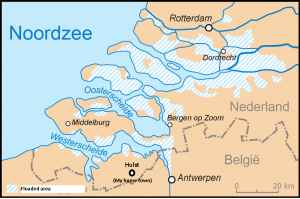
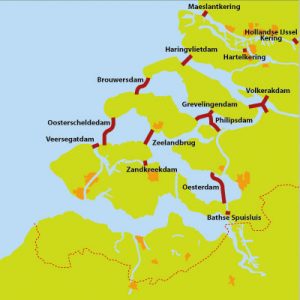
To prevent such a disaster from ever happening again, the Dutch government invested $ 7.8 billion in the Delta works. The Deltaplan got set-up only 20 days after the North Sea Flood of 1953. The main priority was to improve safety in and around the flooded areas, but one should not forget about the economic benefits of open rivers and what would happen to the environment of the rivers when they would be closed off from the sea. The Western Schelde is the only access route to the port of Antwerp, whereas De Nieuwe Waterweg is an important access route to the port of Rotterdam. So how do you keep the rivers open for ships and trade and keep the river environment stable, but also guarantee the safety of people living near and in these flood areas?
Since the Delta committee had as number one priority to keep people save, they first closed waterways that were not important for the ports of both Rotterdam and Antwerp. In these river mouths, they designed dames, barriers and sluices. For the Western Schelde and De Nieuwe Waterweg, the committee decided to not put any of these structures in the river mouths, instead they reinforced the on-land dikes. This way, the ports of Antwerp and Rotterdam remained easy to access.
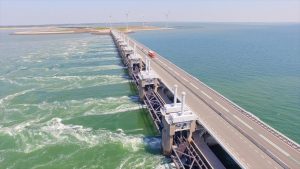
The Eastern Schelde storm surge barrier distinguishes itself from many of the other barriers since the system can be opened. An open barrier is less appealing than a closed dam since it is a lot more expensive, but a closed dam in this area would have negative effects on the fishing industry and the river environment. A total of 62 sluices, which would only be closed in case of storms, are installed to allow as much salt water flowing through as possible to preserve the healthy environment in the Eastern Schelde and the suitable fishing conditions. [3]
The water management system resulted into more benefits than only increased safety. The fresh-water excess created due to the closed dams could be transported to the Ijssel lake to improve the water conditions there. Moreover, the transportation between the different islands of Zeeland became easier since roads were constructed on top of the barriers and dams. Even tough some nature reserves have been damaged by the change in water conditions in the Delta area, new nature reserves have emerged as well. The influence of the Deltaworks on the river environment however is still unknown.
We can conclude that the planning of the Deltaworks depended on several factors such as safety, economy and environment. Due to the large scale of the Deltaworks, namely 700 km of dikes, and the many different factors that played a roll, the Deltaworks took from 1953-1997 to complete. This includes both planning and construction time. The Deltaworks are a great example of systems thinking and adapting to a changing climate. The success of the Deltaworks teaches us that it is possible to balance safety, ecosystem services and economic services, and that is what environmental stewardship is all about.
Used sources:
[1] https://www.pbl.nl/dossiers/klimaatverandering/content/correctie-formulering-over-overstromomgsrisico
[2] https://www.rijkswaterstaat.nl/english/water-systems/protection-against-water/the-flood-of-1953/index.aspx
